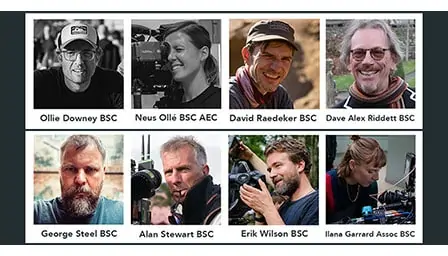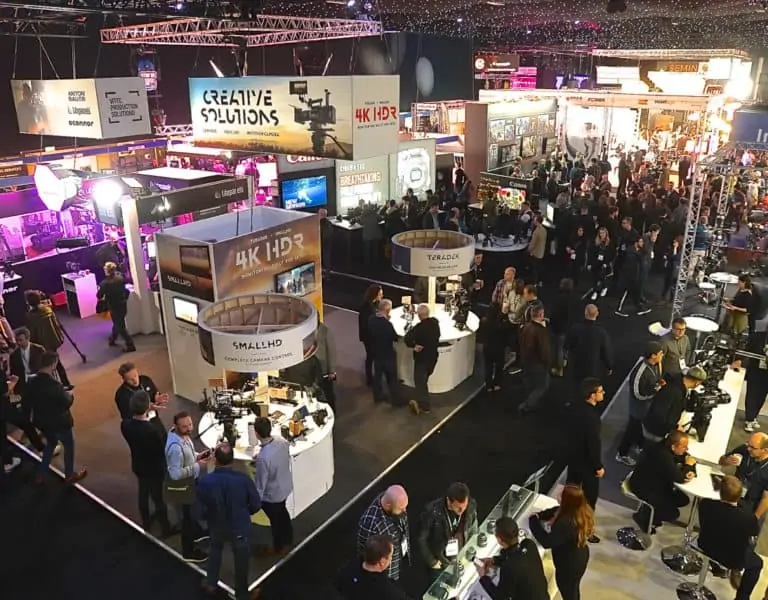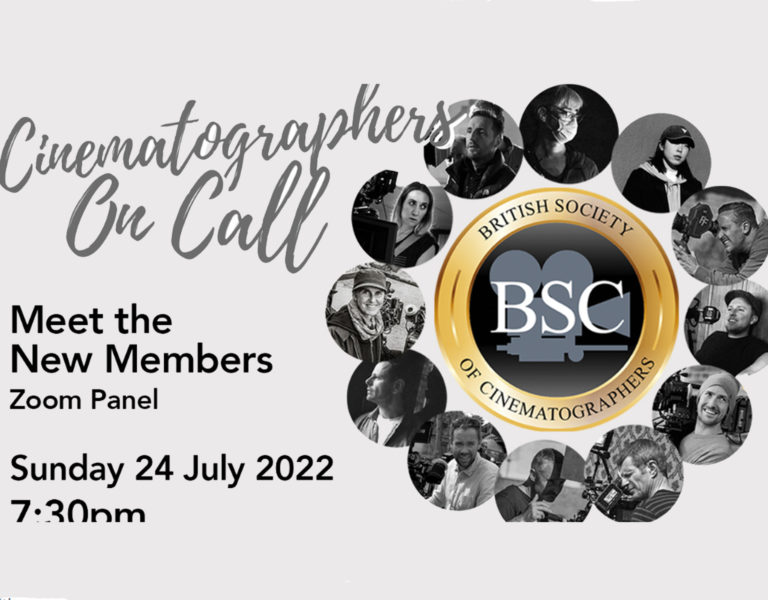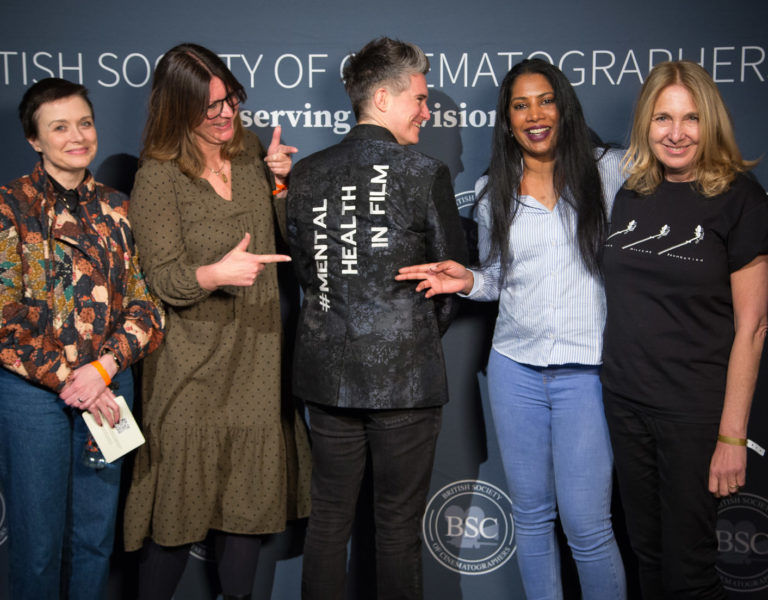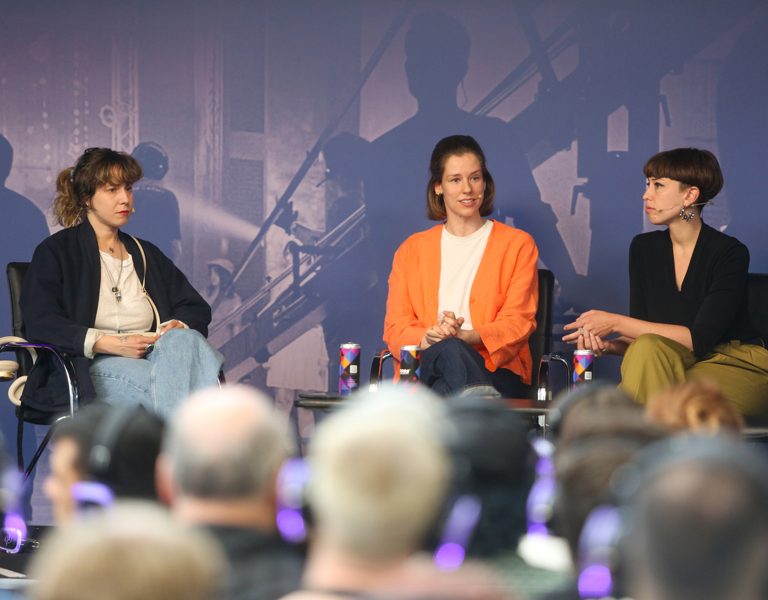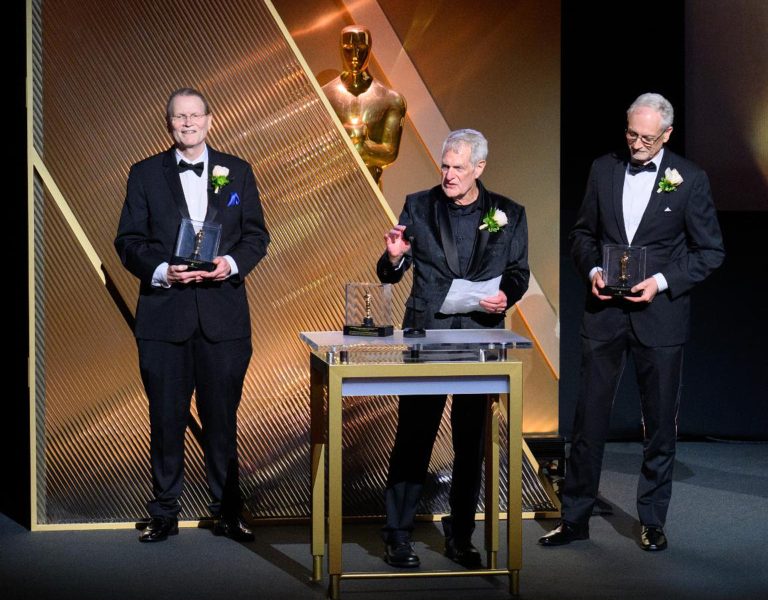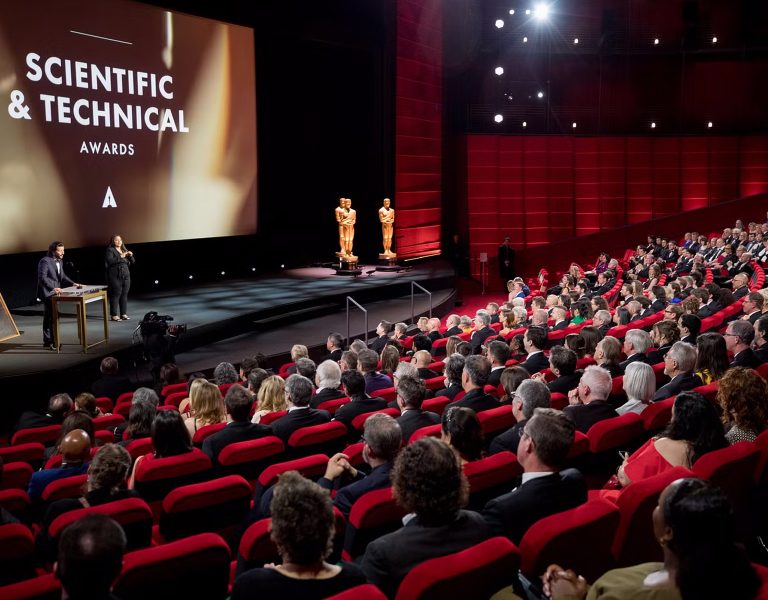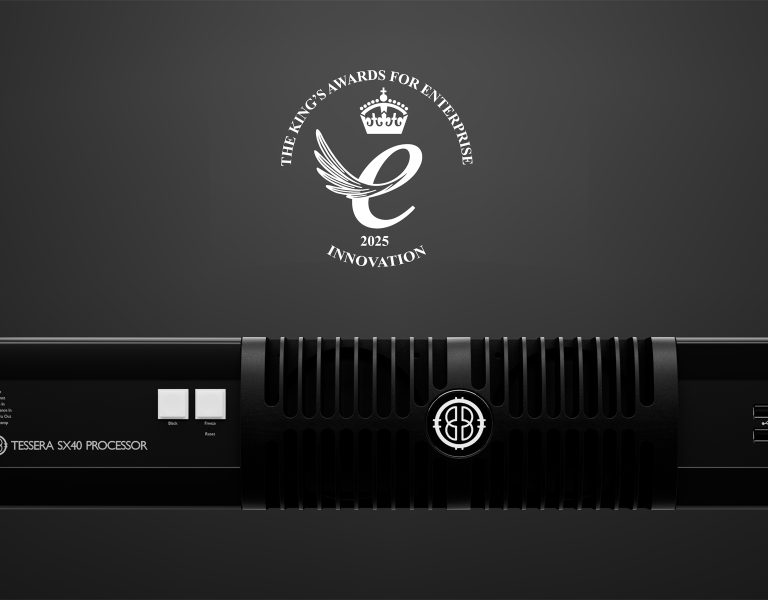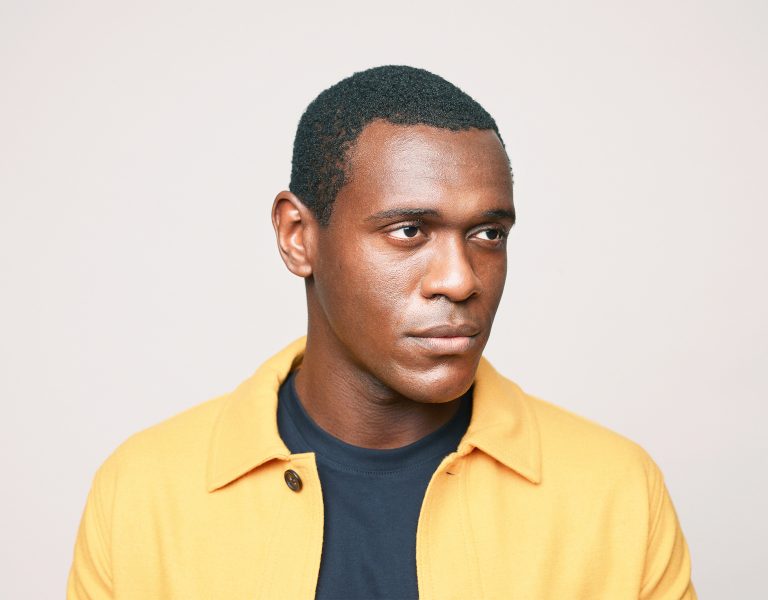
The latest Full and Associate BSC members have been announced and were celebrated at the BSC Summer Lunch. Six talented cinematographers and two camera operators have been invited to join the society who you can find out all about by reading on!

Anna Valdez Hanks BSC
Selected credits
Hope Gap
Missing You
Culprits
Magpie Murders
In Vitro
Training/education:
I didn’t go to film school. I worked up through the ranks of the camera department.
Influence and impact: Could you share an example of a project or filmmaker that has had a profound influence on your work?
Early on, I fell for the highly aesthetic sensibility of Antonioni. His use of images to express existential angst is soul altering. I don’t know of another film maker who has shown the dissonance of living in an urban, capitalist society, as he has. In the short films I shot earlier in my career, where I had more creative freedom, I would yearn to capture the world like he did.
Rainer Werner Fassbinder is my (morally dubious) hero. I find his films remarkable for their dramatic power. He was a master of visual storytelling, his dialogue often working in counterpoint to the images, to powerful and memorable effect. Fassbinder’s elaborate dolly moves are a bit out of vogue just now. So much of his work plays through my mind and sometimes the right scene in the right project arrives, calling for his inspiration.
Life lessons: What has been your biggest learning curve to date?
Instead of going to film school, I worked through the ranks from camera trainee to operator. I often assisted David Odd BSC, a brilliant cinematographer who shot much of the best TV at that time and who was my informal mentor. David takes a radical approach to creativity and to his crew. He believes that fear gradually knocks the creativity out of people, so he would often give junior crew a camera and ask them to shoot something for him, to ignite a creative fire in them. I learnt a huge amount from David and my career owes much to his generosity and belief in me. He spurned me on to shoot short films when I was a loader, and I often turned down paid work to do this.
After this first learning curve of learning how to be a cinematographer, the next one came once I had shot my first couple of TV dramas. I was confident in lighting and coverage but I was essentially shooting in quite a conventional way. I remember I once suggested coverage (WS, MSs, CUs) to a more maverick director and he looked exasperated and said ‘we don’t always have to do it like that’. Something changed for me then and I’ve never wanted to do it ‘like that’ again. Finding ways to surprise and develop the unique expressivity of a project turns me on creatively. My lighting has also become more complex and adventurous as a result.
Challenges and learning: What has been the most challenging aspect of your career thus far, and how did you overcome it?
The most challenging aspect of my career is finding projects that I would myself want to watch – projects that I can feel genuinely excited about and respond to fully. I think my tastes are unfortunately somewhat niche – I’d happily spend a day watching an eight-hour film by Bela Tarr but I might struggle to sit through an eight-part Netflix drama. There are undoubtedly fantastic TV projects out there but also a lot of formulaic ones. This golden age of TV doesn’t sprinkle it’s magic evenly! I feel closer to and more excited by features and artist films but they’re fewer and further between. As time goes on, I am building connections with directors to whom I feel a creative affinity and with whom I can develop a vision.
Future trends: How do you see the role of cinematography evolving in the next decade, and what excites or concerns you about these changes?
The role of cinematography has been through many profound changes in the last 15 years, most notably from film to digital, but also driven by the parallel rise of the streamers. The technical standard of lighting in television has risen, particularly with the advent of LED, faster stocks/cameras and bigger budgets, but I do think that in line with other industries, such as the building industry, with greater focus on monetisation, there is a tendency toward the generic – there’s a lot of slick cinematography out there, but sometimes our work can feel like sticking plaster on a lack a unique creative vision. ‘Where are the audience algorithms taking us?’ is the biggest question on my mind. I’m a big fan of Alan Clarke, for example. The TV he was making in the ’70s and ’80s was staggering and bursting with originality. It’s hard to see work like that finding its way through the current funding process now. I’m all about story, form and vision and that’s what excites me.

Collaboration: Can you describe a memorable collaboration with a director or fellow cinematographer that significantly impacted the outcome of a project?
There are many memorable collaborations I could mention. A recent one was between production designer, Victor Molero, director Claire Oakley and myself, on the Disney+ show Culprits. Much of episode six was set in a disused nightclub. The original plan was to use a Moroccan themed student club and my heart sank when I saw it. Hiding lights would be impossible and there was hardly any depth. Eventually, Victor persuaded production to do to it as an inexpensive build. He made a wall of water tanks and inside each one, we placed a single Astera bulb, then mounted moving lights and other club lighting on suspended trusses. Claire and I worked with the script to create four different lighting themes in the club. The characters enter in near darkness, only lit by hard light. Later they ‘switch on the lights’ and we made a staggered chase with the water tanks. For an interrogation scene, myself and gaffer Mark Holownia build a big octagon of Titan tubes and placed it around the ‘Devil’ character, with a chase so that the light and shadows moved concentrically around his face, to mesmerising effect.
Technical innovation: Are there any new technologies or techniques in cinematography that you find particularly exciting or game-changing?
I am all for embracing LED tech. When I’m not working, I’m a climate activist and in 2019 with DP Sarah Cunningham and others, we co-founded Cut It, a crew based initiative to reduce emissions in our industry. Most of the emissions of our industry come from transport which is a tricky fix, but the second biggest culprit is power. I still need to use diesel generators at times, but when the shoot and scale of the locations allows, I switch to local power and voltstacks. I’ve just fallen in love with the RGB Dino and have been enjoying playing with that. I also love the LED source fours. I love lighting and get a huge kick out of experimenting with unusual choices, such as front lighting with hard light, interactive lighting, or pushing mixed lighting.
BSC membership: What does becoming a BSC member mean to you?
I’m delighted to be a member of the BSC, to be part of an organisation which is at the creative heart of film and TV – and in particular at this time, as the BSC begins to transition into a more inclusive and self-aware organisation.
Words of wisdom: What is your advice to others at the start of their career with ambitions of becoming a BSC member?
Prepare yourself for a slow but rewarding journey in which you will meet wonderful collaborators and new friends. Steel yourself for quiet times and disappointments along the way. If you are a woman, and you decide to have children, negotiate with your partner in advance, about how you are going to share the raising of your kids equally, so that your career can continue. If you’re the one to take the time out and come second to your partner’s career, your own will stall and it may be difficult to revive. The hardest part of starting a successful career as a cinematographer is getting an impressive showreel together. So, women (and enlightened men who share the child rearing equally) you will need to work harder, sooner. Shoot as much as you can as soon as you can. If you may want to have kids, try to break through before you do. It will get so much harder after!

Bjørn Bratberg BSC FNF
Selected credits
The Feast
The Devil’s Hour
The Long Call
Training/education
MA National Film & Television School (NFTS)
BA (HONS) Surrey Institute of Art & Design
Influence and impact: Could you share an example of a project or filmmaker that has had a profound influence on your work?
Early on, I studied film science at university and one day we watched a beautiful print of Truffaut’s Les Quartre Cent Coups (The 400 Blows 1959). The last scene, when Antoine escapes the orphanage and runs and runs until he reaches the sea, had a profound impact on me. At that moment, I suddenly became aware of the incredible power and possibilities of visual expression that moving images can have.
Life lessons: What has been your biggest learning curve to date?
I worked for some time as an operator alongside Tat Radcliffe BSC. It was a very rewarding time. Tat introduced me to image composition via architecture, lines, depth and space and how it affects the viewer. His idea of using instinct and sometimes feeling to compose a shot, is something I carry every day at work.
Challenges and learning: What has been the most challenging aspect of your career thus far, and how did you overcome it?
Spending a lot of time away from home is difficult, especially if you have a family. My partner also works in the film industry and we both seem to always work far away from home. We try to take turns working, but it’s not an easy puzzle.
Before any new job, we have to give it some extra thought; if the time away will be worth it and if it’s practically achievable.
Future trends: How do you see the role of cinematography evolving in the next decade, and what excites or concerns you about these changes?
I am concerned about AI and how that will affect the role of the cinematographer and filmmaking in general. It’s hard to foresee how film production and the audience’s viewing experience will change. But I think it’s important for every one of us to have an opinion about what we want films and visual arts to be in the future.

Collaboration: Can you describe a memorable collaboration with a director or fellow cinematographer that significantly impacted the outcome of a project?
In my experience, a good collaboration is usually a result of a great friendship where visual sensibilities align. I shot The Feast with director Lee Haven Jones, whom I have known and learned together with for many years. We have both been interested in always experimenting and pushing creativity in framing and storytelling. In The Feast, it resulted in a very bold, formal visual style that suited the theme of the film. I am very grateful that I have had that experience.
Technical innovation: Are there any new technologies or techniques in cinematography that you find particularly exciting or game-changing?
Like many cinematographers, I am excited about the evolution of LED lighting, what possibilities and accurate control it gives you. Also, less power consumption and smaller footprint. It is improving rapidly and is a positive addition to sustainable filmmaking.
BSC membership: What does becoming a BSC member mean to you?
As a film student, BSC membership was always the most prestigious acknowledgement one could achieve as a cinematographer- the highest standard set by your peers and fellow artists. I am honoured now to be included in the esteemed company of so many talented DPs.
Words of wisdom: What is your advice to others at the start of their career with ambitions of becoming a BSC member?
If one decides to pursue the profession as a cinematographer, you are in it for the long haul. Things take time and everything you do, the people you meet and the places you go is a part of shaping your approach as a cinematographer. You are in constant development, even as a professional. One has to be patient and stick with it – results will come, but this is a lifelong profession.

Frank Passingham BSC
Selected credits
The Secret Adventures of Tom Thumb
A Close Shave
Chicken Run
Coraline
The Pirates! Band of Misfits
Kubo and the Two Strings
Guillermo del Toro’s Pinocchio
Training/education
When I started out after having the realisation that I wanted to be a filmmaker, I started to teach myself. I went out and bought a relatively cheap Super 8 camera, a viewer and editing kit and went out and about around Bristol filming documentary style footage of different parts of the city, getting the three-minute cassettes processed and then editing them on my simple edit set up. It was a great way to learn, not just how to shoot stuff but how it could be successfully cut together. I was able to use these short films along with the stills photography I had been doing over the previous two years to secure myself a place on the Bristol University RFT Radio Film and Television course. This was a one-year crash course in Radio Film and Television. It was great. I learnt so much. Working with different cameras, working with sound and realising how important that was, working in the edit suite and looking at all the different ways shots can cut together. It was a revelation.
Influence and impact: Could you share an example of a project or filmmaker that has had a profound influence on your work?
At the age of 11 I went to my local cinema to see Jason and the Argonauts. It blew my mind and I was never to forget the experience. I believe that Ray Harryhausen was 13 years old when he saw King Kong in 1933 and I believe it must have had a similarly profound effect on him. There’s a reason why people look back on these films now and refer to them as Ray Harryhausen movies and it was because he was so instrumental in getting those movies made. He wasn’t just the animator, he wasn’t just the VFX artist, he wasn’t just the cinematographer because he was all of those things at the same time. He was the only reason those movies could have got made for the tiny budgets they were made for. As an example, look at It Came From Beneath The Sea, the budget for that movie at that time was $300,000. In todays money that translates into $3,500,000 which is still a tiny budget by today’s criteria. None of those films could have been made without the amazing talents of Harryhausen. I was lucky enough to meet Ray on a couple of occasions. He came to Aardman Animations to talk to us and he brought his seven skeleton sword fighters from Jason and the Argonauts! What a day that was. I wondered how he could have such a thin armature inside the limbs of the skeletons and he told us how his father machined the armatures and he built up latex around the armatures so the armatures literally became the limbs of the skeletons. The last time I met him was at a screening of Chicken Run in LA.
Life lessons: What has been your biggest learning curve to date?
In 1977 I’d come out of Art School was having a few exhibitions of my art. I’d got into photography during my last year but was not having a great deal of interest in my painting so I decided to go traveling and take my camera with me. For the next 18 months I hitch hiked around the USA and visited Guatemala and Mexico. It was while I was on a beach in Mazatlan. I was bent over and about to take a picture of the ripples in the sand. As I was about to take the picture the wind started blowing and I was captivated watching those ripples dissolved by the wind. The ripples disappeared but I was still there staring through the lens and thinking ‘I wish I’d had a movie camera!’ A few months later I’d travelled north and was visiting my old art teacher in Bristol, Hassel Smith, and he introduced me to an artist working in mixed media who showed me some of his experimental Super 8 movies which I can only describe as kinetic cubism. That really inspired me to get a Super camera when I returned to Bristol and it wasn’t too long before I discovered the single frame button!
Challenges and learning: What has been the most challenging aspect of your career thus far, and how did you overcome it?
My first experiences in the industry were working on documentaries, using a rostrum camera to film title sequences for the local TV stations and filming 2D animation. Some of this work could be quite tedious and so I took a job with Rolls Royce in the airplane engine wing of the company and became their unit cinematographer. As work experiences go, it wasn’t bad and you got to travel to the US, Spain and Canada but the bulk of the work is filming planes taking off and landing, filming helicopters taking off and landing and then there was filming the production line. Apart from sometimes using a few colour gels to film a rotating fan blade from an RB211, it wasn’t the most creative job in the world. At the point when I got to thinking about quitting they decided to shut down the Rolls Royce film unit and I was able to use the redundancy money to buy their rostrum camera and other equipment to set myself up on an independent basis on the premises of the Film Co-op in Bristol which led to many creative filmmaking opportunities.

Future trends: How do you see the role of cinematography evolving in the next decade, and what excites or concerns you about these changes?
In terms of the tech, the advances in cameras and the amazing quality of sensors that deliver stunning high resolution images, I think this serves the Natural History filmmakers incredibly well. The Natural History I’ve been watching recently with drone footage shot in amazing high-res is a wonder to behold. The new lenses used to film the macro world of insect life with more depth of field than we’ve ever seen before is quite fantastic. The advances in technology in this world will bring us images beyond our imagining. But I’m not so sure about this in the world of fiction and drama. I think the way we use the new tech is paramount. The way we use light shadow and colour will still be key in the world of drama.
Collaboration: Can you describe a memorable collaboration with a director or fellow cinematographer that significantly impacted the outcome of a project?
I believe the collaboration I had with both Guillermo del Toro and Mark Gustafson when we were making Pinocchio went beyond any experience I had had up to that time and it was certainly the quality and shape of that collaboration that made it so special. Two directors with a keen eye and considerable knowledge of cinematography and awareness of its effect and importance to the storytelling. Both of them always open to ideas on ways of constructing a shot and always coming up with a creative solution that all of us would contribute to. I never felt afraid to disagree with an idea. We all felt very comfortable as a team and with each other. I felt I had the freedom to try certain things out that enabled us to push the boundaries on this project. I think that came through a mutual trust.
Technical innovation: Are there any new technologies or techniques in cinematography that you find particularly exciting or game-changing?
Light and especially the quality of light has always been a major concern for me. So the advances in LED technology is of the utmost interest. I was very worried by some of the early LED tech. The studio I have been currently working at is still transitioning to LED lighting. There has been no choice in making the transition from tungsten in all the low-voltage (LV) lights, but thankfully good progress has been made in the development of these lights. I’m excited to try the new LED 5K and 10K lights that have recently come on the market. It looks like there are some good products out there now which I’m looking forward to testing out.
BSC membership: What does becoming a BSC member mean to you?
It’s a huge deal for me becoming an BSC member. It means there is more recognition now of the cinematography in the world of stop-frame animation that I specialise in. Because of the difference in this medium you end up being quite isolated from regular live action cinematography and don’t get to meet many cinematographers working in that more widely accepted art form. In the past I have attended seminars and panels comprising of ASC members at events like Cine Gear and got to talk to cinematographers like Lazlo Kovacs, Jack Green and Michael Ballhaus and learnt a lot from the stories they had to tell. I’m hoping that will change now and I will get to meet more cinematographers working in a myriad of different ways and styles across the spectrum of cinematography.
Words of wisdom: What is your advice to others at the start of their career with ambitions of becoming a BSC member?
When I was starting out I never said no to working on any project whether it was live action, fiction, documentary, rostrum camera work, assistant camera, lighting camera. I wanted to do as much as I could and learn as much as I could in the shortest amount of time. The more experience you get, whether it’s in a studio or on location, you will gain more confidence and more control in the medium. Experience is key and you can never get enough of it.

Matt Poynter ACO SOC Assoc. BSC
Selected credits
Sandman S2 (A camera/Steadicam)
Willow (A Camera/ Steadicam)
Indiana Jones 5
Damsel (A camera/Steadicam/additional photography)
Wicked (dailies)
Snow White (dailies)
Ghostbusters (dailies)
Training/education
All on set.
Influence and impact: Could you share an example of a project or filmmaker that has had a profound influence on your work?
I’d say that every director, cinematographer and operator has influenced my work, the late Roger Michell was a wonderful director to watch, he had a real understanding of how to listen to an actor, and guide a performance accordingly. Chris Seager BSC and David Higgs BSC are two cinematographers who gave me my first breaks as an operator and taught me a lot about storytelling. And operators Phil Sindall ACO, and Julian Morson ACO probably taught me as much as anyone. Focus pulling for them was the best preparation for becoming an operator.
Life lessons: What has been your biggest learning curve to date?
My first time putting on a Steadicam on a paid job. I was shaking like a leaf. I took a deep breath, and tried to relax. Luckily, I blagged it.
Future trends: How do you see the role of cinematography/camera operation evolving in the next decade, and what excites or concerns you about these changes?
Everyone fears AI, and we’re right to be nervous, but I feel we’re a way away from it taking over what we do. We bring such a human paintbrush, I can’t see it replacing us for quite a while.

Collaboration: Can you describe a memorable collaboration with a cinematographer or fellow camera operator that significantly impacted the outcome of a project?
Working with Julian Morson on Indiana Jones 5, that was a wonderful time, and Michael Carstensen on B camera on Willow – we worked together seamlessly.
Technical innovation: Are there any new technologies or techniques in cinematography that you find particularly exciting or game-changing?
The speed of remote head and gimbal advancement has been phenomenal. Where that’s taking us is going to be exciting to see.
BSC membership: What does becoming an Associate BSC member mean to you?
The honour to sit with peers like those at the BSC is something I never thought I’d achieve when I was loading film on documentaries in my mid-20s. I can’t wait to absorb more knowledge from fellow members, and hopefully contribute something the other way.
Words of wisdom: What is your advice to others at the start of their career with ambitions of becoming a BSC member/Associate BSC member?
Be patient. Listen, understand everyone’s job in your team. I’m a firm believer in working your way through the grades. Going forward, it gives you and others the confidence that you can do the job.

Oona Menges BSC
Training/education
I worked up through the ranks, starting as a runner at 16 years old.
Influence and impact: Could you share an example of a project or filmmaker that has had a profound influence on your work?
Jim Jarmusch / Robby Müller NSC BVK together. The balance of art and technique that allows the story to shine with little to no fuss in their perfectly executed shots. So elegant. Something I strive for. That perfect balance of left and right brain.
Life lessons: What has been your biggest learning curve to date?
A large part of our work is in compromise, negotiation and people management. I’m fascinated by people and I’m energised by this whole dance that is a large part of our job. But it has been a learning curve and it still provides endless learning opportunities. When I can persuade someone my idea is their own, I’m winning.
Challenges and learning: What has been the most challenging aspect of your career thus far, and how did you overcome it?
The most challenging aspect has been being a single mother and having to turn down so many amazing opportunities in order to parent. I didn’t so much overcome it as survive it. Now my son is grown up I can do as I please. Arguably this is also my greatest achievement.
Future trends: How do you see the role of cinematography evolving in the next decade, and what excites or concerns you about these changes?
The job is feeling ever more technical and more and more people are wanting a say in the imagery and how its captured. I think it’s going to continue on this route with CGI, VP and other technology being used as the norm now and whilst we have always been problem solvers it feels like that part and the people management side of the role is taking up more space. It’s a real thrill to be working like this but I hope our creative impulses aren’t bogged down completely with the technical.

Collaboration: Can you describe a memorable collaboration with a director or fellow cinematographer that significantly impacted the outcome of a project?
LOLA is the obvious answer that comes to mind. The film was all about the camera, and between the ‘wobblyscope’ operating director Andrew Legge wanted and the scratching and fogging of the negative we were doing, the impact on the project was HUGE.
Technical innovation: Are there any new technologies or techniques in cinematography that you find particularly exciting or game-changing?
Every week I learn about a new bell or whistle that is a game changer and exciting. I’ve literally just come out of a conversation about the Sony Burano’s internal image stabilisation and mentally ear marked it for my next job as it will potentially solve all my problems in one fell swoop. Although I’ve yet to test it for myself, I’m very excited about it. All these new tools are changing our on set experience.
BSC membership: What does becoming a BSC member mean to you?
I’m deeply humbled and honoured, and after the blood, sweat and tears, the validation of such amazing DPs has given me a real boost.
Words of wisdom: What is your advice to others at the start of their career with ambitions of becoming a BSC member?
To concentrate on their work and their personal development, to let go of their egos and allow it to take time. It’s about the journey.

Sean Ellis BSC
Selected credits
Left Turn
Cashback
Voyage d’Affaires
The Broken
Metro Manila
Anthropoid
Eight for Silver
The Cut
Training/education
I started taking pictures when I was 11. Throughout my school years I worked at the weekends at Jessops photocentre and processed/printed for various wedding photographers. At 16, I started assisting two of Brighton’s biggest names in still life photography, Guy Ryecart and Calvey Talyor-Haw. At 23, I moved to New York to assist Steven Meisel and then later to London to assist Nick Knight.
My first fashion images were published in Dazed and Confused magazine in 1996 and from there I went on to work with magazines such as i-D, The Face, Visionaire, GQ, Arena, Arena Homme Plus, Dazed and Confused, Numero and Vogue.
Influence and impact: Could you share an example of a project or filmmaker that has had a profound influence on your work?
The style of my fashion photography was sometimes described as ‘cinematic’. This led to crossover with film and I was asked to direct a music video for the band All Saints in the same style as I had photographed their album cover, a few months earlier. Much of my fashion work was lit using flash so continuous film lighting was all new to me. The DP for the All Saints video was the late, great, Freddie Francis BSC. Freddie was such an inspiration to me in the beginning and helped me understand the huge difference between a photoshoot and a film set. I was a young photographer who was asked to direct and Freddie tended to shake his head at me lot – I probably annoyed him with all my questions about lights, lenses and cameras. The music video“Never, Ever” went on to win ‘Best Video of the Year’ at the 1998 Brit awards.
Life lessons: What has been your biggest learning curve to date?
Failure is the only thing you really learn from. You have to be ready to embrace your failures. The autopsy will provide you with so much useful experience.
Challenges and learning: What has been the most challenging aspect of your career thus far, and how did you overcome it?
I think the transition from photography to film has been the hardest thing. I thought the transition would be smoother but I found out that being a director and being a photographer are worlds apart. While having a photographic background is useful, you really are learning how to navigate a brand new career.
Future trends: How do you see the role of cinematography evolving in the next decade, and what excites or concerns you about these changes?
I think this really depends what happens to cinema and streaming platforms in the next five years. Cinema is at a crisis point right now. Streamers have dismantled the structure of finance that once led to films being financed for theatrical distribution. So there are now fewer ways to get a film financed and producers have to be very smart and creative in order to get stories made and seen.

Collaboration: Can you describe a memorable collaboration with a director or fellow cinematographer that significantly impacted the outcome of a project?
In 2001, Harper’s Bazaar commissioned a series of fashion stories where a fashion photographer collaborated with a film director. I had the honour of being paired with David Lynch on these images. Upon seeing our hard work the magazine thought the images were very ‘Dark’. When I told David this he just laughed and said, “with your pictures and my films, what were they expecting?!?”
Technical innovation: Are there any new technologies or techniques in cinematography that you find particularly exciting or game-changing?
Data bores me if I’m honest. I’m old school and I really only shoot film at the moment. Steven Spielberg said, “Digital photography is a science and film photography is a chemical miracle.” I love that miracle!
BSC membership: What does becoming a BSC member mean to you?
To think of all the talent the organisation has harnessed in the last 75 years and to then be included as part of its future is such a huge responsibility and a great honour.
Words of wisdom: What is your advice to others at the start of their career with ambitions of becoming a BSC member?
Study the form, read everything you can, learn from anyone willing to teach and make mistakes.

Sergio Delgado BSC
Selected credits
A Gentleman in Moscow
The Great
The Thief his Wife and the Canoe
Soulmates
Training/education
Image and Sound in Junipero Serra school in Palma de Mallorca.
Cinematography in Centro de Estudios Cinematográficos de Cataluña in Barcelona.
Influence and impact: Could you share an example of a project or filmmaker that has had a profound influence on your work?
There are a lot of directors and cinematographers who have inspired and influenced my lighting over the years, and I have had the pleasure to work with a few of them on different projects. One of the projects was a movie called The Limits of Control, directed by Jim Jarmusch and lit by Christopher Doyle. In that moment, Jim Jarmusch was one of my favourite directors and Christopher Doyle one of my favourite cinematographers. I was working closely with both of them and I learned a lot from Jim about how to tell a story, how to develop a scene and from Chris I learned how to remedy some difficult lighting situations and make it simple. Chris is not just a cinematographer, he is an artist. So working with him showed me the magic of the lighting.
Life lessons: What has been your biggest learning curve to date?
Over the years of working, you learn how to balance the time and the quality. When you are starting out, you get stuck with small details that you think are important but experience teaches you perspective on where you really need to focus the effort and time.

Challenges and learning: What has been the most challenging aspect of your career thus far, and how did you overcome it?
For me, always the most challenging locations are beach and forest at night, because it’s very easy to make them look over lit. Shooting The Last Kingdom we had a night scene, of a big battle, in a clearing in a forest the size of a football pitch, surrounded by dense woodland. The access was very tricky so it was almost impossible to put any lights up. Working with Production and Location departments, we found a way to enable us to bring two giant cranes with two big soft boxes to create a soft moonlight effect.
Future trends: How do you see the role of cinematography evolving in the next decade, and what excites or concerns you about these changes?
I can’t see cinematography changing too much but my only concern is how AI might affect us.
Technical innovation: Are there any new technologies or techniques in cinematography that you find particularly exciting or game-changing?
I think that the new cameras have changed the game, especially shooting at night as they are so fast and I consider that helps us to make the lighting of the night look more real.
I’m a big fan of tungsten lights but I think in the last few years, LED lights are changing the game as well by helping you work much faster. LED lights have improved a lot in the last two years. They consume much less energy, making them more sustainable, and you don’t need to use so many gels.
BSC membership: What does becoming a BSC member mean to you?
For me, BSC membership has always meant the greatest stamp of quality a DP can have. It would be an honour and a privilege to become a member of this society. Many of your members have inspired me throughout my career.
Words of wisdom: What is your advice to others at the start of their career with ambitions of becoming a BSC member?
Work hard and don’t give up. Keep your eyes open to the people around you, who you can learn a lot from. Listen to the opinion of other members of your team.

Zoe Goodwin Stuart ACO SOC Assoc. BSC
Selected credits
The Franchise
The Acolyte
Wonka
The Witcher Season 3
Training/education
Graduated from University of Central England in Film and TV Production and worked my way up through the camera department after being given my first opportunity on TV drama Dalziel and Pascoe as a trainee.
Influence and impact: Could you share an example of a project or filmmaker that has had a profound influence on your work?
I think there might be too many to mention here. I have been a film fan since I was four years old with my Nan taking me to the cinema most Saturday mornings to catch the early B Picture and then to stay for the newest release that week. My Nan was a huge fan of David Lean and we watched his films over and over. It would be remiss of me not to mention Harold Rosson whose work I spent hours and hours watching. He could take you places only cinema magic can. He along with my Nan made me love movies.
Life lessons: What has been your biggest learning curve to date?
Without a doubt, B camera operator on Wonka was not only a huge learning curve but a fantastic opportunity. Working with Seamus McGarvey ASC BSC, Chung Hoon Chung and A camera operator Pete Robertson ACO Assoc BSC was certainly a highlight of my career to date. This was my first feature film and extremely overwhelming. But, I embraced the challenge and relished every moment. Knowing you are working alongside incredible crafts people in every department certainly helps ups your game.
Challenges and learning: What has been the most challenging aspect of your career thus far, and how did you overcome it?
Finding a work/life balance. I love my job so much and being on set gives me so much joy. Navigating long periods without work is always a hard one for me. We are all living in a freelance world and with that comes quieter times. I have learnt to try embrace these more and more. It’s never easy but now I am much more mindful about it.
Future trends: How do you see the role of cinematography/camera operation evolving in the next decade, and what excites or concerns you about these changes?
I am excited to see more and more diversity in the role of camera operator. We have come a long way but we still have a long long way to go.

Collaboration: Can you describe a memorable collaboration with a cinematographer or fellow camera operator that significantly impacted the outcome of a project?
I would have to say The Acolyte with cinematographers Chris Teague and James Friend ASC BSC. Their approach to the maintaining the integrity of the Star Wars world was paramount in creating the feel of the show. Before shooting I was invited to a tone meeting which was incredible. It was like being back at film school and made everyone from every department feel completely engaged with the story and the vision for the show. This translated to every shot I framed for on set. That meant that alongside A camera operator Danny Bishop ACO Assoc BSC SOC, we could seamlessly collaborate with each other and our directors to maintain the show’s signature visuals. It was such a collaborative project, not just from the whole camera department but every department. It was a very special production, I loved it.
BSC membership: What does becoming an Associate BSC member mean to you?
I am genuinely overwhelmed. It is a huge honour to be inducted as an Associate BSC. When I started my career as a green camera trainee over 20 years ago I knew I wanted to be an operator. To be recognised by the BSC and be part of such an institution of filmmaking is something I will forever be proud of.
Words of wisdom: What is your advice to others at the start of their career with ambitions of becoming a BSC member/Associate BSC member?
Stay true to yourself, work at your craft, keep learning, there’s always something to learn and most importantly enjoy it.
